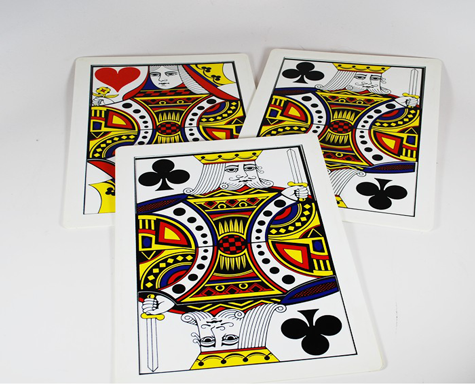
Effect: The performer has the spectator pick a card, which is lost in the deck. Then, the performer shows the spectator two Jacks and an Ace, and places them face down. He/she is then told to follow the ace as the performer mixes the cards. Despite appearing simple, the spectator gets it wrong. The performer repeats this, but first shows one of the Jacks to help the spectator; they still get it wrong. On the last time, both Jacks are flipped face up so the spectator can see which card should be the Ace. However, when flipped up, it turns out to be the chosen card!
Preparation
- Remove two black Jacks and one red Ace (or two red Jacks and one black Ace, it doesn’t matter so long as you have the contrast).
- Arrange the removed cards in a separate packet as follows: J-A-J
Performance
To start, have the spectator select any card, let’s say, the Ten of Clubs. Whilst they are memorising it or showing it to other spectators, hold the deck face down in the Biddle Grip (thumb at one end, middle finger and index finger at the other). Have them place it on top of the deck, face down, then swing cut the top half (roughly) into your left hand (if you are right-handed) in the Mechanic’s Grip (cards are in palm of hand with thumb on one side, index finger at the end, and other three fingers opposite the thumb). Hold a pinkie break above this portion as you drop the remainder of the cards into this grip. Transfer the deck from your left hand back into the Biddle Grip in your right, whilst holding the break still, and use the Double Undercut to control their card to the top (without them knowing). If you are able, do a few false shuffles before setting the deck aside and turning to the packet of cards that you have.
Fan the cards and show them to the spectator, explaining that you have two Jacks and an Ace. Place them on the bottom of the deck, showing the spectator exactly how you are putting them there (the order should be: 49 cards, Jack, Ace, Jack from top to bottom). Then, tell them you will give them the Jack when, in reality, you will glide them the Ace first. Then place the Jack and tell them you’ve placed the Ace, and finally place down the Jack. Now, mix them up slowly (you don’t want them to think it’s difficult or else it’s less effective) and tell them to watch the Ace. When you’re done, tell them to point to where they think it is (of course it will be the Jack) and flip up the Jack in its place. Then show the other two cards. (note: if you’re good at the glide, you don’t need to use the deck, you can just glide with the packet of three cards, although it’s a bit risky)
Repeat the procedure in the above paragraph, this time putting the initial three cards in a different order at the bottom of the deck. This time, when you mix up the cards, track both the Ace and the Jack that the spectator thinks is an Ace; this time round, you wish to reveal the Jack that isn’t the ‘Ace’ (in the spectator’s mind) or else they could get it right when they choose. If done right, they’ll get it wrong again, and you’ll reveal the cards. Let them examine the cards to prove that there are no trick cards or extra cards. Whilst they are doing this, buckle the top card of the deck (which is the spectator’s card [10 of Clubs] if you did the first step correctly) and, in the Mechanic’s grip in your right hand (if you are right-handed), take a small break with either your pinkie or the fleshy part of your hand near the base of your thumb. Take the cards back from the spectator, and put them on top of the deck in the order J-A-J. Lift all the cards above the break up (you have four cards now), taking great care not to expose the bottom card. Show the top card (Jack) and place it under the packet. Flip the packet face up and peel away the bottom two cards (Ace and Jack), taking great card not to expose the 2nd card. Say that the order, from top to bottom, is now A-J-J (it is actually A-J-10-J). Now show the top card (Ace) and place it under the packet. Flip the packet face-up. This time, in a similar fashion to the Ascanio Spread, peel away the top and bottom cards, taking great care not to flash the 3rd card. Say that the order, from top to bottom, is now J-J-A (it is actually J-10-J-A). Now, with the Ace on the bottom, you’re ready.
Place the packet face down on top of the deck, and as you deal, say the card the audience think you’re dealing. So, you deal the top Jack and say “Jack,” then deal the chosen Ten of Clubs and say “Jack,” and then deal the other Jack and say “Ace,”. The Ace is actually left on top of the deck. Keep an eye out for the chosen card as you slowly mix the cards, but this time explain that you’re going to make it really easy for the audience, and reveal both Jacks, which you then proceed to do. Ask them to point to the Ace and, to their amazement, reveal the chosen card in its place.
NOTE: Instead of placing the packet on the bottom of the deck and using Glides, you can place it on top of the deck and use Double Lifts. This keeps the way you put the cards on the table consistent, but means you sacrifice the ability to expose the card order initially. Trick by Josh Barraclough


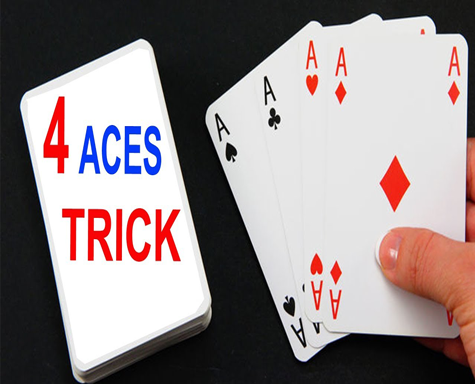
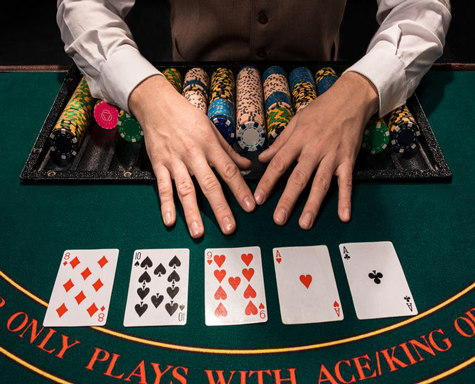

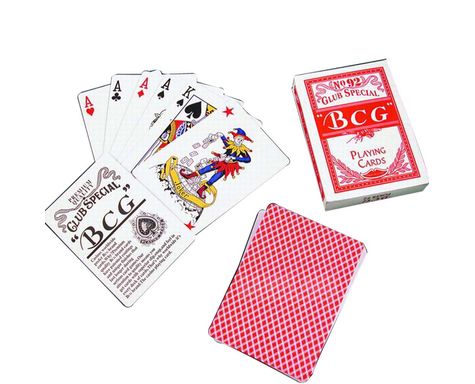
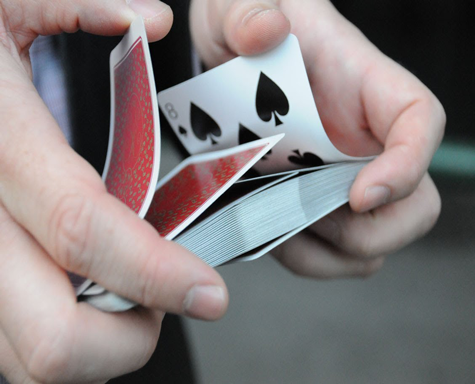
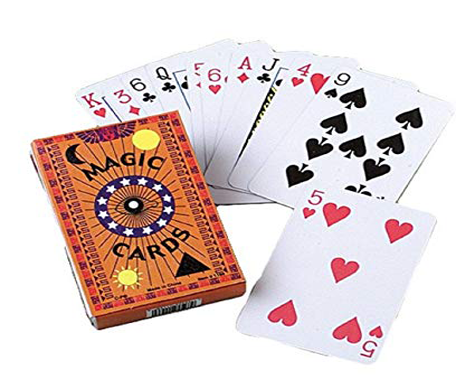
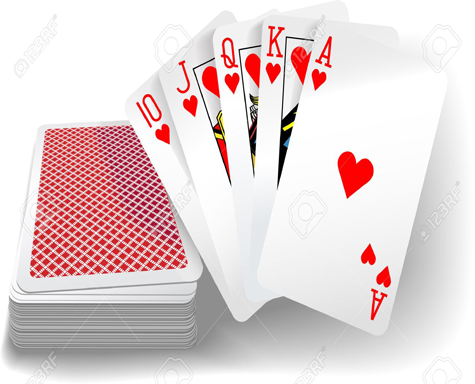
 Have a cool card trick? Please email it to us to
Have a cool card trick? Please email it to us to